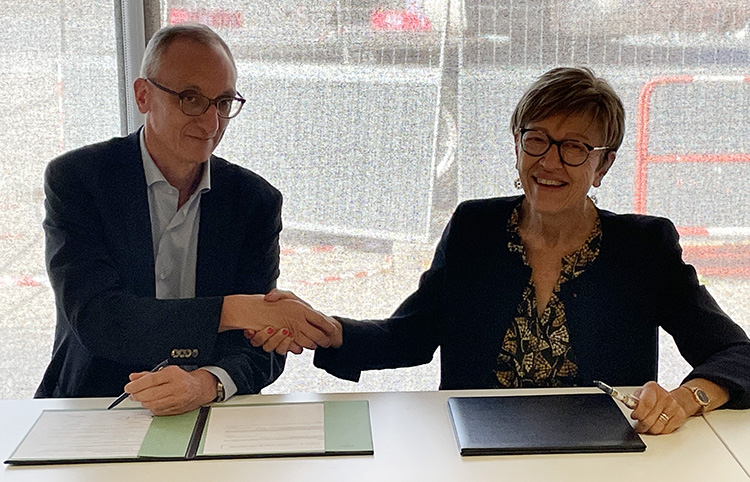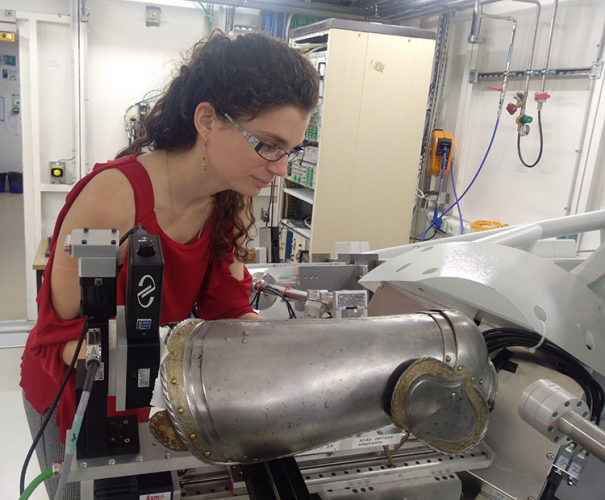On 21 June 2022, the renewal of the framework agreement between the Fondation des Sciences du Patrimoine (FSP) and SOLEIL was signed by Isabelle Pallot-Frossard, President of the FSP, and Jean Daillant, Director General of SOLEIL.
"This new agreement will enable us to continue to support collaboration and facilitate the emergence of projects on the scientific theme of material heritage," emphasises Jean DAILLANT.
A framework agreement for research in the field of tangible cultural heritage
The purpose of this new agreement is to strengthen the cooperation already initiated in 2019 between the FSP and Synchrotron SOLEIL with a view to contributing together to the missions of developing knowledge, disseminating scientific culture and promoting scientific heritage in the field of tangible cultural heritage.
With this agreement, the FSP and SOLEIL expressly agree to cooperate in the following activities
- Collaborative projects involving several members of the FSP and integrating the scientific programming of the latter;
- Scientific editing: publications, international exchanges;
- Events: conferences, thematic days, training courses, exhibitions.

21 June 2022 - Signing of the renewal of the framework agreement on by Mrs Isabelle Pallot-Frossard, President of the FSP, and Mr Jean Daillant, Director General of SOLEIL.
A collaborative flagship project, in 2 acts
For several years, interdisciplinary research, based on the physico-chemical analysis of metal, has been carried out in order to examine the place of arms and armour in societies between the end of the Middle Ages and the beginning of the early modern period. In 2020 and 2021, the ARMETUDE1 project, led by Emilie Bérard, focused on the armour-making techniques of Valentin Siebenbürger's famous Nuremberg production workshop (c. 1510-1564). Although metallographic analyses, commonly used to study ancient ferrous alloys, are rich in information, they have the disadvantage of requiring the removal of a few millimetres of material in order to obtain localised information - an operation that is rarely permitted in the case of museum pieces. Therefore, a methodological development that does not alter the objects studied was necessary.
A suitable approach is to use the X-ray diffraction (XRD) technique, which allows the identification of different crystalline structures, characteristic of ferrous alloys, such as ferrite or cementite (Fe3C), directly on whole pieces of armour, without damaging them. The complex geometry of these parts requires, nevertheless, the implementation of a set-up and a methodology adapted to their analysis. These study conditions are gathered on the DIFFABS beamline of SOLEIL where, within the framework of ARMETUDE, first investigations were carried out on about a dozen objects, including a large suit of armour from the Musée des Beaux-Arts de Rennes entrusted to the custody of the Musée de l'Armée. Thanks to the rapid recording of the results of X-ray diffraction measurements, the analyses could be multiplied on the same object, thus making it possible to estimate the variability of the alloys used (carbon content, heat treatments, etc.).

Emilie Bérard sets up a piece of armour for its X-ray diffraction analysis at the DIFFABS beamline
Since 2021, a second joint FSP-SOLEIL project, ATENURE2, has enabled Emilie Bérard to continue this work, by expanding the corpus of Nuremberg pieces studied, while enriching the methodology by adding other analysis techniques complementary to XRD (X-ray fluorescence spectrometry, optical microscopy, scanning electron microscopy, mass spectrometry coupled with laser ablation, etc.) The results highlight the heterogeneity of the metal for each object, thus raising new questions about their shaping and the organisation of work in the Nuremberg workshops. Placed in a context of interdisciplinary reflection and cross-referenced with other historical sources, these data provide new information on ancient technical knowledge, the origin and nature of the materials used, and contribute to the development of a broad reference database on the ferrous alloys used in the field of armament.
These projects were co-financed by the FSP and SOLEIL for the contract of Emilie Bérard (post-doctorate).
1 - Projet ARMETUDE - The armour under study in Valentin Siebenbürger's workshop
Carrier : LAPA- IRAMAT/NIMBE, CEA Saclay
Partners : AGORA (CYU) / SOLEIL / ICMPE / ARSCAN/ Musée de l’Armée/Musée des Beaux-Arts de Rennes
2 - Projet ATENURE - Nuremberg armour production analysed on different scales: from the workshop to the production centre
Carrier : LAPA-IRAMAT / NIMBE, CEA Saclay
Partners : Héritages (CYU) / SOLEIL / C2RMF/ ICMPE / ARSCAN/ Musée de l’Armée/Musée des Beaux-Arts de Rennes
